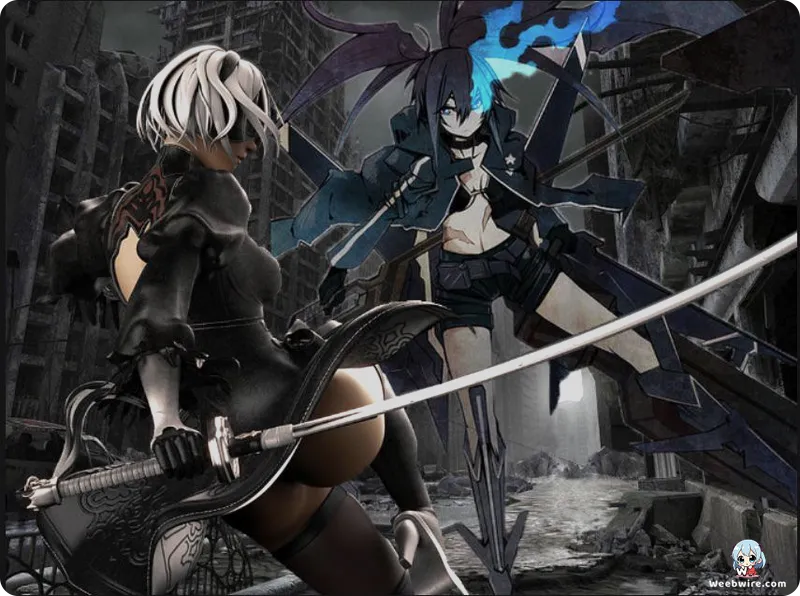The Blue Flame Burns On: Unpacking the Revolutionary Journey of Black Rock Shooter, From Fan Art to Psychological Anime Hit

The history of Black Rock Shooter (BRS) stands as one of the most unique success stories in contemporary anime production. Unlike franchises adapted from established manga or light novels, the 2012 television series and its preceding 2010 OVA originated from an extraordinarily abstract source: a single piece of digital artwork and a subsequent viral music track. This remarkable genesis provides the foundation for the franchise’s deep lore and its distinctive, bifurcated narrative style.
The BRS concept first materialized in 2007, thanks to the vision of illustrator huke, a member of the renowned creative collective Supercell. Huke uploaded his original character illustration to the art community Pixiv. The image showcased a striking figure: a girl with characteristic twin tails, a fierce blue flame burning from her eye, and the imposing presence of an impossibly large cannon. At that moment, there was no accompanying media or established lore, only a compelling visual aesthetic. This fact remains perhaps the most surprising element of the franchise’s foundation, demonstrating that a singular, powerful design can indeed ignite a global cultural phenomenon.
The Symbiotic Relationship with Music
The second critical development arrived shortly thereafter, inextricably linking the franchise to the world of music. Ryo, Supercell's principal songwriter, was immediately inspired by huke's creation, leading him to compose the now-iconic song, "Black Rock Shooter." Released in 2008, the track utilized the synthesized voice of the Vocaloid idol, Hatsune Miku, quickly becoming a massive viral sensation and accumulating millions of streams worldwide. This symbiotic relationship between huke's powerful imagery and ryo's emotional, high-octane music cemented BRS's widespread popularity, entirely bypassing the conventional literary medium.

However, this musical origin often causes confusion among casual viewers, who frequently mistake Black Rock Shooter herself for a derivative of Hatsune Miku, despite the characters being fundamentally separate entities.
Constructing a Cohesive Narrative
When the time came for adaptation, the creative team, including studios Ordet and Sanzigen, and celebrated writer Mari Okada (known for Anohana and Toradora!), faced the challenging task of constructing a cohesive story from this abstract foundation. Their solution was establishing a potent narrative duality.
The series operates across two parallel realities. The 'Real World' offers a grounded 'Slice of Life' focus on protagonist Mato Kuroi and her high school peers, exploring universal themes of insecurity, friendship, and emotional growth. Simultaneously, the 'Other World' unfolds as a bleak, surreal battleground where Mato's powerful alter ego, Black Rock Shooter, engages in brutal, existential combat against rivals like Dead Master and Chariot.
Here lies the core psychological brilliance: these high-stakes battles are not merely action sequences, but profound visual metaphors. They directly represent the internal psychological struggles, suppressed pain, and emotional trauma experienced by the girls in the 'Real World.' Any destruction or breakthrough witnessed in the 'Other World' corresponds precisely to an emotional shift or crisis in the real-world character's psyche. This intricate mechanism allows the anime to masterfully weave visceral action with complex psychological drama, rewarding fans who appreciate deeper thematic layers. Expanding significantly upon the initial 2010 OVA, the TV series meticulously developed the supporting cast, including Yomi, Yuu, and Kagari, detailing their complex backstories and illustrating how their emotional burdens fuel the eternal war fought by their alter egos. The franchise stands as a compelling testament to adaptability, demonstrating how digital creativity, sparked by a single iconic illustration, can be retrofitted into a fully realized, emotionally resonant psychological drama.
Credits
Black Rock Shooter (2012 TV Series)
Author
huke (Original Concept/Illustration)
Cover Art
huke
Studio
Ordet, Sanzigen
Publisher
Good Smile Company (Original Figure/Merchandise)
Producers





